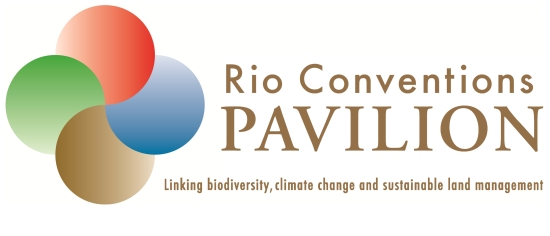Summary of proceedings for Rio Conventions Pavilion UNCCD COP 12 - 20 October 2015: Ecosystem Restoration Day
 Tuesday, October 20, 2015 at 02:32PM
Tuesday, October 20, 2015 at 02:32PM
Ecosystem Restoration Day was opened by Dennis Garrity who talked about how the global community is mobilizing around the Bonn Challenge, the New York Summit Declaration, and the Land Degradation Neutrality SDG target to restore hundreds of millions of hectares of degraded lands. RB Sinha highlighted the importance of restoration efforts in India. The session highlighted key developments in building momentum around these efforts by strengthening partnerships and investmentment opportunities. Garrity discussed the 20x20 Latin America Restoration Initiative, which is committed to restoring 20 million hectares of land by 2020, and has restored 37 million hectares in the last 15 years. Pedro Lara of the Global Mechanism (GM) presented key messages for public policy makers on sustainable financing for forest and landscape restoration (FLR). Information on Forest and Landscape Restoration can be found here. CEO Peter Bakker said he and many private sector CEOs are not yet familiar with LDN. Going further, he explained business is at the start of the journey to LDN, so they must understand LDN and scale up solutions. Bakker encouraged the audience to read Land Degradation Neutrality: Issue Brief for Business.
The opening was followed by a session about the African forest and landscape restoration, which highlighted current efforts to accelerate effective approaches to supporting country-led efforts to develop and realize restoration commitments. Landscape resilience in Africa was discussed by Magda Lovei of TerrAfrica, who said that Africa is the world’s largest restoration opportunity, and many African countries are committed to restoring a lot of land. Jonathan Davies of the Global Drylands Initiative, IUCN spoke on the restoration of pastoral lands and cautioned that governments sometimes too hastily plant trees on well-managed pastoral lands in the name of restoration. He emphasized that pastoralists are a great group to approach as restoration allies.
Debbie Bossio of CGIAR said that 50 percent of soil organic carbon has been lost: a sink waiting to be filled that could increase food security. She went further to say adaptation, food security, and climate mitigation are all improved through Climate Smart Agriculture. Ermias Betemariam of ICRAF then discussed land health surveillance and agroforestry in support of land restoration in Africa. Additionally, Clinton Muller explained how communities are responsible for the land and introduced the concept of LandCare. “When we think about community involvement, we have to think about hard, as well as soft skills”, he said, “as the social structure, norms, networks and trust must be considered in order for the project to be sustained long-term.”
A session organized by the Convention on Biological Diversity then followed, emphasizing the importance of leveraging social programmes with socio-economic objectives for the conservation and restoration of biodiversity and ecosystems. Kwangho Baek from Korea’s National Reforestation Program said Korea’s government has been transparent by explaining mistakes they have made, learning lessons and implementing best practices. Luvuyo Mlilo of the Environmental Protection and Infrastructure Programme of the Department of Environmental Affairs in South Africa said that job creation is key to his country’s restoration success. He mentioned that South Africa also focuses on the environmental education of youth, and that it is sending the message to its people that unless they take care of the land, it will degrade.
Several FAO colleagues presented topics concerning advances in tree cover mapping and monitoring for restoration. Lars Laestidius of WRI focused on the importance of land cover mapping, while Nora Berrahmouni of FAO discussed forest and landscape tools for restoration in degraded farmlands. Madelon Lohbeck from ICRAF pointed out that planting trees is only part of restoration, and that it is important to figure out exactly how degraded the land is, then fit the restoration strategy to the land type.
The day closed with a presentation by WRI’s Chris Reij, who spoke about the specific steps to regreening and shared several great restoration stories from Ethiopia, Niger, Mali, Malawi and Burkina Faso. He said that the people of Ethiopia have moved at least 90 million tons of earth to restore their slopes in order to allow more water absorption and that a very important part of getting farmers to adopt restoration practices is for them to hear best practices directly from successful farmers in similar landscapes.
Following the talks, participants were invited to a attend a cocktail reception and film viewing of the outstanding restoration documentary “Ethiopia Rising!”


Reader Comments